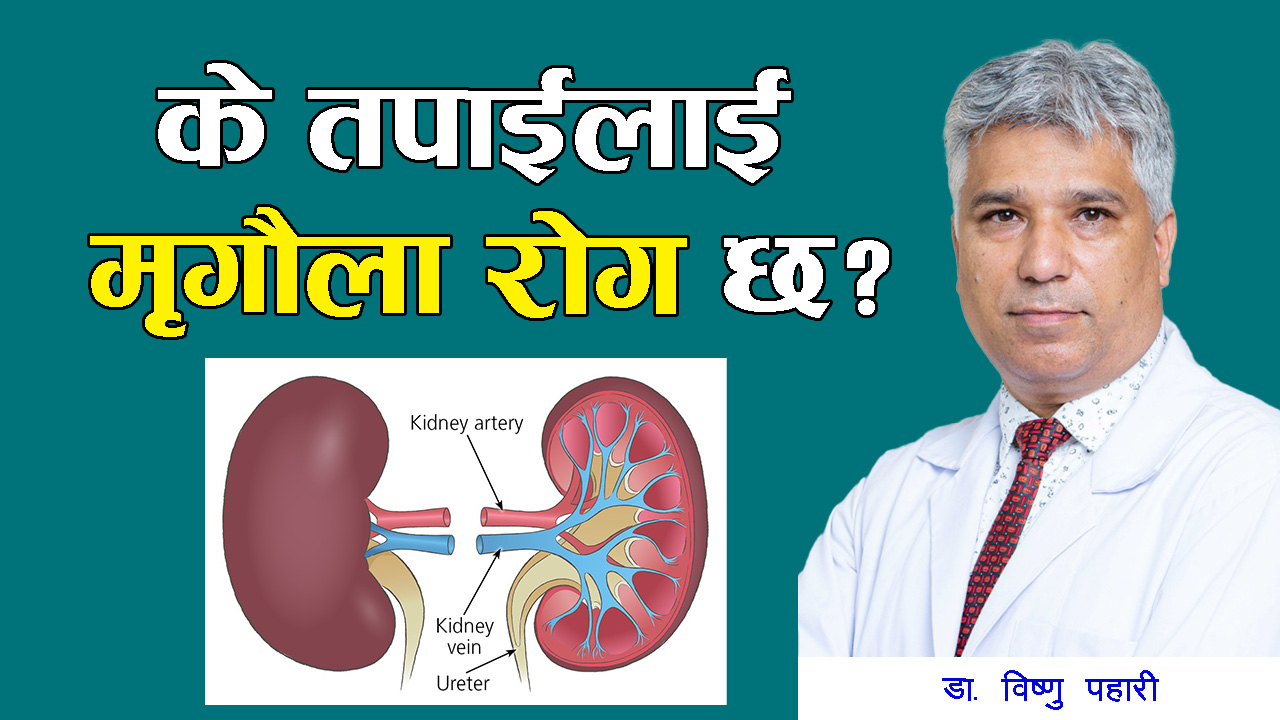

Know about your Kidney Health
Most people have two kidneys, each about the size of an adult fist,(about 9 to 11 cm) in size, located on either side of the spine just below the rib cage. Although they are small, kidneys do many important jobs. Some of the important are:
• Removing natural waste products and extra water from body
• Helping make red blood cells
• Balancing important minerals in the body: Sodium, Potassium,Calcium,Po4
• Regulation in blood pressure
• Keeping bones healthy by regulating Calcium, phosphorus, Vit D, Parathyroid hormone.
What Symptoms do you have with kidney disease?
Usually symptoms do not appear till kidney function declines below 70 percent of its capacity so it is very important to check kidney functions at least yearly specially those with diabetes, high blood pressure.
List of the symptoms with kidney disease includes:
Blood tests:
Serum creatinine
Creatinine is a waste product that comes from the digestion of protein in food and the normal breakdown of muscle tissue. It is removed from the body through the kidneys. A “normal” creatinine level in the blood is hard to define because it can change depending on age, sex, body size, and other factors. For this test, a lower number is better. High creatinine levels can be a sign of acute kidney injury and/or chronic kidney disease. Normal values of creatinine are 0.6-1.2mg/dl.
Cystatin C
Cystatin C is a protein that is produced by the cells in body. Like creatinine, it is also removed from the body through the kidneys. So, it is another option to use to calculate eGFR, if needed. This test is not as common as the creatinine test and can be more expensive. For this test, a lower number is better.Estimated glomerular filtration rate (eGFR)
The estimated glomerular filtration rate (eGFR) is an estimate of how well kidneys are removing waste products from the blood. It is calculated using serum creatinine level, age, and sex. It can also be calculated using cystatin C level. A “normal” eGFR varies according to age – it decreases with age. For this test, a higher number is better. In general, an eGFR value lower than 60 is a sign that the kidneys may not be working properly. An eGFR lower than 15 is a marker of kidney failure.
Blood urea nitrogen (BUN)
Urea nitrogen is a waste product in blood that comes from the breakdown of protein in the food.it is removed through kidneys. A “normal” BUN level varies, and usually increases with age.Checking your BUN level is usually not very helpful by itself. BUN levels need to be compared with creatinine and eGFR levels.
Urine Tests:
Urine analysis:
A urinalysis is a simple test that checks a small sample of urine for many different things. First, a visual exam is done to check for things like color and how cloudy the sample is. Next, a dipstick (chemically treated test strip) is dipped into the urine sample. The strip changes color in the presence of abnormalities – for example, high amounts of acid, albumin (protein), bacteria, blood, pus, or sugar. Last, the sample may be looked at under a microscope for a more detailed look.
Urine albumin-creatinine ratio (uACR)
The urine albumin-creatinine ratio (uACR) test measures the amount of two different substances in urine – albumin (protein) and creatinine. Healthy kidneys keep the albumin in blood while filtering the creatinine out into the urine. So, there should be very little or no albumin in urine. The uACR is calculated by dividing the amount of urine albumin by the amount of urine creatinine to find the ratio. A “normal” uACR level is lower than 30 mg/g. For this test, a lower number is better. A uACR level of 30 mg/g or higher can be a sign of albuminuria.
24-hour urine collection
A 24-hour urine collection test can be ordered for many reasons – kidney stones, glomerular disease, or to measure kidney function. This test requires collecting all the urine you make over a 24-hour period in a special container. It is usually used as a next-step option if abnormal results are found using one of the other testing methods.
Other tests:
Ultrasound:
This test uses sound waves to get a general picture of kidneys or other organs. It may be used to look for abnormalities in size or position of the kidneys, or look for obstructions such as stones or tumors.
CT Scan:
This test uses x-rays to get many detailed pictures of the kidneys or other parts of the body. Like ultrasound, it can also be used to look for structural abnormalities or obstructions. This test may require the use of intravenous contrast dye which can be of concern for people living with kidney disease.
Magnetic resonance imaging (MRI):
This test uses strong magnets and radio waves to get many detailed pictures of the kidneys or other parts of the body. Like ultrasound, it can also be used to look for structural abnormalities or obstructions. This test may require the use of intravenous contrast dye which can be of concern for people living with kidney disease.
Kidney Biopsy:
A kidney biopsy is a test in which one or more tiny pieces (samples) of a kidney is removed through a kidney biopsy gun under ultrasound guidance and then looked at with a microscope. Kidney Specialists may order a kidney biopsy if they need more information after looking at blood tests, urine tests, or medical imaging results. Some examples of when a biopsy may be needed include certain types of kidney disease such as nephrotic syndrome or glomerular disease. A biopsy may also be needed in kidney transplants and if it is not working well.
Measured glomerular filtration rate (mGFR):
The measured glomerular filtration rate (mGFR) directly measures how well kidneys are removing waste products from the blood. It can be a complicated and lengthy process. So, it is not used as often as the estimated GFR (eGFR). Kidney Specialists may recommend this test if a more accurate measure of kidney function is needed.
What Precaution to take to prevent Kidney Disease?